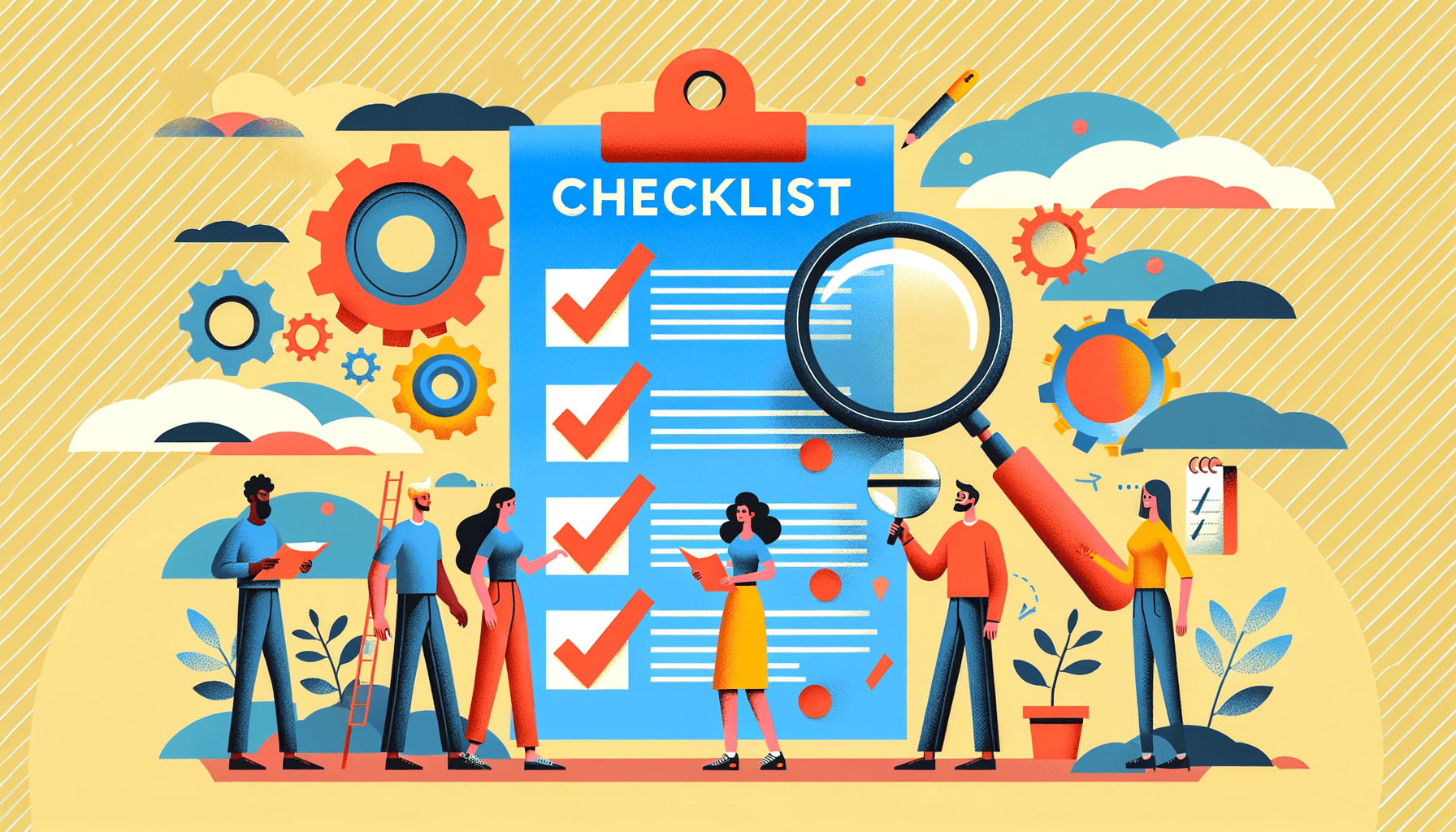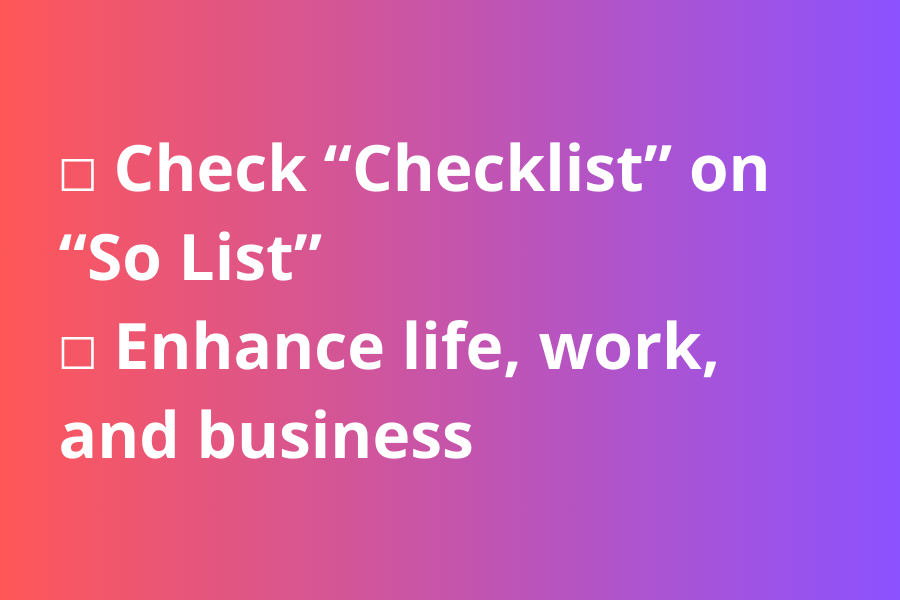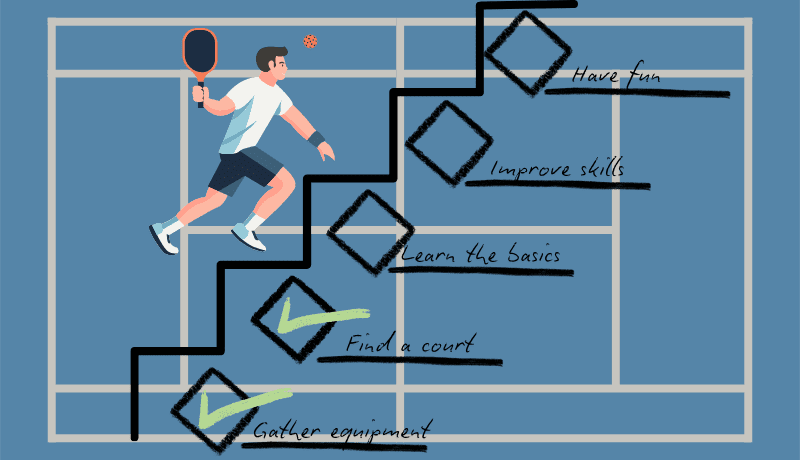What is Checklist
What is a checklist? Turns out it's more than you can think of.

Checklists on the Blog “So List”
The blog “So List” regularly writes about checklists. However, there hasn't been an article explaining what exactly a checklist is. This situation with missing introduction needs to be corrected.
This material isn't long, but it contains links to the previously created posts about various aspects of checklists. These can be useful for personal tasks or work. They are also applicable in the project management and business of a higher scale.
What Is a Checklist?
Checklists are defined in several ways around the web. Let's investigate some.
From the Dictionary.com [1]:
A list of items, as names or tasks, for comparison, verification, or other checking purposes.
From the Merriam-Webster dictionary [2]:
A list of things to be checked or done.
From the Cambridge Dictionary [3]:
A list of things that you must think about, or that you must remember to do.
The blog “So List” offers the following actionable definition for the term “checklist”:
It looks closer to the first definition from Dictionary.com. In other words, a checklist could be treated as a set of repetitive tasks aimed at achieving a particular goal. I hope the proposed definition clearly describes the main points of the phenomena.
There are different types of checklists, for example, “Read-Do” and “Do-Confirm.” The definition above attempts to encompass both. By the way, there is a separate post on this topic on the blog.
What Else to Read About Checklists?
History of Checklist
Did pilots invent checklists in 1935 for safety purposes? If you think so, read “Pilots did not invent checklists in 1935. When did they appear?”
It was quite a fascinating research for me. And you’ll learn of the previously hidden history of checklists. It all started not with the pre-flight checklists but with the check-list.
How to Create Checklists
Want to know more about creating checklists, but Atul Gawande's book “Checklist” [4] didn't provide enough instructions and specific criteria for the high-quality results?
Use the information from the article “How to Create a Working Checklist.” At the end of the post, there's a concise guide for clear understanding on how to create a checklist.
How to Enhance Checklists
Do you think creating a checklist is enough to support flawless processes? I'm pleased to inform you that it's not. Developing processes for better efficiency and better performance must be supported by the continuous improvement of the corresponding checklists.
The complete description is in the article “Development of Lists and Checklists”. Good for those interested in the process optimization.
How to Enhance Checklists Even Further
Having trouble creating an effective checklist? Despite following the outlined critical steps, the essential success isn't achieved? Maybe it's time to integrate your checklist into operations and procedures? This is covered in the series “The Checklist Is Just the Beginning”.
Part One talks about transforming routine operations into a physical tool to ensure consistency.
Part Two explains how to integrate the important steps from the list into mental labor.
The third one, Part Three, continues the second part and shows how to turn a checklist into a template. The ability to transform checklists from documentation into tools will serve you well.
How to Formulate a Checklist Item
The blog also covers formulation, with rules for setting milestones and tasks. You can read about these critical items of project management in “Milestone vs. Task. Mastering Both”.
The Personal Checklists Usages Examples
A separate checklist can also be used for personal tasks. A checklist will help those who are willing to improve the time spent and perform regular sports activities for their healthcare.
The examples of the real users of lists to check include paper-based system as well as digital one. In both paper and digital cases, checklists are used to determine the main purpose for a period and maintain focus to achieve the desired results with fewer errors.
You can even use a checklist to maintain friendships! It's better to organize and have “boring” items completed than to “joyfully” never gather with your friends again.
The Business Checklist Usage Examples
Do you see the benefits as a single checklist user, but want an example from a real company? An observation checklist cards-based system will ensure productivity, help collect data and provide details about mistakes and performance change over time. You can read about this, along with the accompanying process, in the post “So Business List. Observation in the Workplace”.
Some checklists allow you to collect data and later provide details of the dynamics of some processes. Even the global ones! Have a look at the post about the Apgar score to familiarize with an example. Over the years, none of these critical items left the original checklist. It’s still a task for every birth attendant all over the Earth to use these instructions.
The Checklist Even Has Its Holiday!
Willing to celebrate the effectiveness gained from the checklists’ usage? Consider the National Checklist Day. However, I am beginning to doubt that this is a real holiday.🕵️
And More About Checklists

If you're already surprised after reading the above list of articles, you'll be even more amazed to learn that the blog's content on checklists doesn't end here. Everything not listed above can be found under the special tag.
There are materials about aviation projects to introduce electronic checklist into practice. There's also information on how to use a checklist to define work that's clear to all participants in joint activities. You can even find a picture of a checklist on the Moon!
The number of ways to use checklists to improve the quality of life, work, and business doesn't end here. Subscribe to the blog's newsletter for new perspectives on familiar tools. Not to a lesser extent, you can find the different usages of the elder checklist's brother: list.
List of Links
[1] “Checklist” from the “Dictionary.com” website
[2] “Checklist” from the “Merriam-Webster” website
[3] “Checklist” from the “Cambridge Dictionary” website
[4] Atul Gawande, “The Checklist Manifesto: How to Get Things Right”, ISBN 978-0312430009



